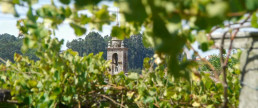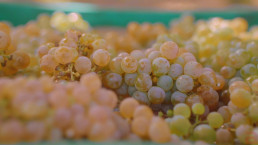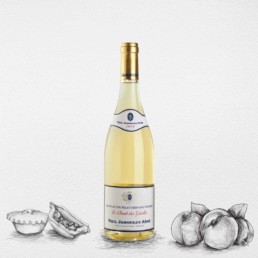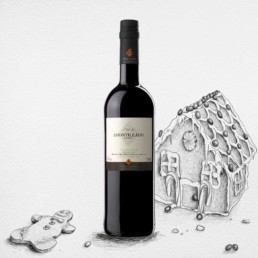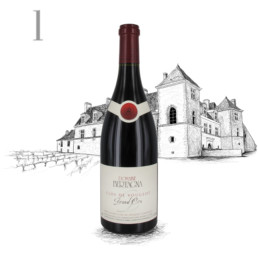Maior de Mendoza: Lusciously On-Trend Albariño
You had me at hola!
Move over Savvy, a sassy Señorita called Albariño is strutting her stuff!
Maior De Mendoza Albariños were awarded 5 Gold medals at the International Wine Awards 11th Edition (2020) Becoming the most awarded white wine-making winery in the contest.
There’s a distinct hint of an autumnal chill in the air but the sun warms the skin which makes us yearn for wines that remind us of summer… and glamorous holidays in sun-kissed climes. Spain anyone? Perfect timing to indulge in a touch of “armchair travelling” through the contents of your wine glass – we are saying Hola! to Dhall & Nash’s sensational Spanish Wondermaker winery – Maior de Mendoza.
For many, Spanish wines are all about great value reds. Quietly, almost stealthily, Spain is transforming itself into a terrific hunting ground for quality but still “bargain” white wines too. Of course, indigenous varieties like Albariño capture a uniquely Spanish character in a way that other international varieties might not.
“In what seems like just a few years, Spanish Albariño has evolved from a charming regional white into something more serious and structured—but the prices have yet to catch up!”
David Lynch, Sommelier & Wine Writer
The Sassy Señorita
Albariño is a multi-faceted “Señorita” that has been compared to Riesling for its mineral-driven acidity, to Petit Manseng and Viognier for fruity qualities of peach and apricot, and to Pinot Gris for its distinctive floral and spicy bouquet. We can readily understand the ampelographic confusion with these numerous and competing characteristics.
Apart from being a very old grape variety, its exact origins are quite murky. According to an unverifiable hypothesis, it was supposedly brought to Galicia by Cistercian monks from Germany (the possible Riesling link) or France (the possible Viognier link) via the Camino de Santiago between the 11th and 13th centuries. However, the assumption of a relationship with Riesling is not plausible. According to DNA analyses carried out in 2003, there is a closer relationship to the Loureiro variety which is one of the major grapes used in the wines of the northern Portuguese wine region of Vinho Verde. Both grape varieties share similar attributes. Indisputably, however, is that a solid local culture of winemaking from Albariño has been present in Rias Baixas for many centuries.
Meanwhile, in NZ, the Albariño grape variety is a relatively recent and a very welcome migrant. Its thick skin enables it to do well in the cool and damp climate of Galicia, which is good reason why the variety has attracted keen interest from New Zealand winegrowers hopeful it will prove well-suited to our own not dissimilar growing conditions. Not to mention that quality Albariño wines can be intensely aromatic, appealing to our kiwi palates well-versed in slurping up zingy savvy and classy cool-climate chardy or punchy pinot gris.
“Albariño – The perfumed, elegant aristocrat”
Jancis Robinson MW
The Maior de Mendoza Story
La Historia
Our Dhall & Nash Wondermaker, Maior de Mendoza are pioneers. They were pioneers as one of Galicia’s very first wineries, being established in 1978 even before the Rias Baixas D.O. (Denominación de Origen) was created. They were pioneers in lees aging (geek talk coming later) their Albarinos when no-one was even considering such a style. They were also pioneers in sustainable viticulture.
This is a family business founded by patriarch José Barros Cuervo, a true pioneer in the Albariño world. It was thanks to Jose’s foresight that they now have some of the oldest and most revered vines in the entire D.O. and have, over the last half century, become leaders in producing award-winning, Atlantic-style Albariño that they export all over the world.
The Barros family has been dedicated to viticulture of the Albariño variety since the beginning in the 1970s. At that time, the Regulatory Council had not yet been formed and grape production was carried out on very small family plots. José Barros started by planting 10 hectares of vineyards, which was luckily one of the most decisive gambles on the Albariño variety, as well as the beginning of one of the largest vineyard land holdings in Galicia.
It was after the creation of the Denomination of Origin in 1984, that the winery was officially founded. The winery name, Maior de Mendoza, (Mayor of Mendoza) responds to a family’s commitment to a land and its history, since Doña Maior de Mendoza was the wife of Mayor Fernando Mariño de Lobera, Monterrei and Soutomaior, who, among other titles, held that of Señor de Trabanca, which gives its name to the place where the winery is located.
Maior de Mendoza continues to exalt these family roots and values with a culture based on passion for the Albariño variety and aiming to always produce quality wines. This is shown in the commitment of the technical staff led by Cristina Mantilla, one of the most important and respected oenologists in Spain and one of the people who best understands the Albariño variety.
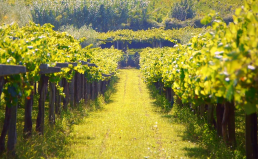
Wild Wonderful Galicia
Galicia, Maravillosamente Salvaje!
To further appreciate the vinous delights of MDM Albariños, we are “armchair-jetting” to discover northwestern Spain – an area nicknamed “Green” Spain. It’s almost a country unto itself, more like Ireland than Iberia. To the north and west is the cooling influence of the Atlantic ocean, to the south is the border with Portugal, and towards the east is the hot, dry interior of Spain. The real heartland of Albariño is the Rías Baixas (pronounced Ree-aas Bye-shas) region in the southern part of Galicia. It is the most important Denomination of Origin (D.O.) in the province and is the largest global producer of Albariño, earning international acclaim for the variety.
The dramatic and ancient coastal landscape of Rias Baixas features a series of spectacular jagged inlets & shallow fjords known as “rias”, hence the name Rias Baixas, which means literally the “lower estuaries”. The D.O. Rias Baixas encompasses over 4000 hectares of vineyards, split into 5 sub-zones according to their topography and proximity to rivers and the sea. Although over 99% of all wine produced in this region is white, 96% of that is Albariño. The differences in microclimates, terroir, and winemaking techniques in the 5 subzones, make for impressive diversity from largely just one grape variety.
The winery of Maior de Mendoza is based close to Pontevedra surrounded by vineyards in the Rias Baixas sub-zone of Val do Salnés, right on the Atlantic coast. This is the region’s oldest sub-region. It is also considered by locals to be the birthplace of the Albariño grape variety.
The Maior De Mendoza Philosophy
La Filosofía
From the outset, Maior de Mendoza’s philosophy has been based on extracting the best from the Albariño variety, always caring for it with the utmost respect for the environment and naturally with artisanal passion. Their goal has always been to understand the rhythms of the vineyard, the grape, the wine, the soil, and the climate, adapting all the work procedures to them. This philosophy has become a way of life. MDM believe that only in this way, from their obsession for this glorious grape, they can make a firm commitment to produce wines if fine consistency and of the highest quality.
The Land – Terroir
El Terruño
There’s something about wines grown close to the coast that hammers home the concept of terroir better than others. Terroir is the total natural environment of a grapevine, and in the case of Maior de Mendoza Albariño vines, that means an environment in proximity to the wild Atlantic ocean which you will experience upon taking your first sip. Their “coastal” wines have a readily identifiable thread, this is a hallmark brininess of the type you might taste on your lips after a day at the beach. It’s refreshing vibrancy, crystalline salinity, and perfectly chiselled fruit that makes it a marriage made in heaven when paired with fresh seafood.
The MDM farms are grouped into two areas on precipitous slopes that fall towards the fishing village of Carril (famous for its clams & perfect paired with Albariño of course!) at around 70 metres above sea level. There are farms further north in the Salnés Valley, also facing the Atlantic, with rocky granite-based soils, full of xabre (fragmented rock), which are also located at a higher altitude than is usual in the area. Val do Salnés has the coolest and wettest weather patterns of all Rías Baixas vineyards, with average yearly temperatures of just 13 degrees Celsius. This terroir is the perfect catalyst to trap aromatics and also to give the wines a nervy acidity which benefits their ageability.
To deal with the high rainfall of the area, MDM utilise an old trellising system – here, as in most of Rias Baixas vineyards, is this pergola-style system they use to train the vines. The pergolas have a number of advantages, advantages which are amplified when the vines are growing on poor hilly soils on steeply angled slopes to maximise sunshine, but also to deal with lots of humidity and rainfall. The raised canopy above the grapes provides canopy shade so the ground stays several degrees cooler than using a modern, low wire, trellis system. Importantly here, the grapes are well ventilated on a pergola allowing air to circulate around the grapes and also providing the best protection against fungal diseases, especially powdery mildew, and botrytis. It also allows for additional crop farming and animals grazing to take place underneath the vines. The traditional old style farming ecosystem.
MDM have been pioneers in the DO for practising sustainable farming methods for over 40 years. No herbicides, insecticides or other harmful products are used. Everything is done by hand prioritizing respect for the vine and for low yields. The needs are determined by the viticultural team who have years of experience and knowledge about each vineyard’s rhythms and idiosyncrasies.
“Each one of our wines is produced through different vinification processes, continuing the differentiation of work carried out on the vineyards throughout the year to create wines with their own hints and characters, although all are from the Albariño variety.”
MDM Website
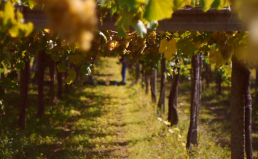
Winemaking
La Vinificación
The work in the Maior De Mendoza winery is an extension of their philosophy of working in the vineyard, since sustainable agriculture only makes sense if it is followed by respectful winemaking that they have been developing for decades. The overarching focus is on the grape and on how to transfer its full potential to the wines, intervening as little as possible but with precision and with the appropriate techniques. They believe that viticulture and oenology are two sides of the same coin and that there is not a single oenological process that is not directly influenced by viticulture. Classic minimal intervention winemaking.
The best way to show this philosophy is for example, when they stopped using herbicides, there was not only a benefit to their soils and the natural environment, but they also enriched the naturally occurring grape yeasts, which were no longer attacked by these chemicals. Oenologically, this allowed them to use the native yeasts in fermentation and then carry out the aging on lees with them. They believed that if they had not eliminated the herbicides from the vineyard, they would not have been able to make quality wines on the lees.
MDM make young albariños (like Fulget) with the traditional vinification methods followed in the region – with maceration on their skins and partial malolactic fermentation. In this wine, they focus on varietal intensity and maritime Atlantic freshness. But without a doubt, the process that has given them fame and differentiated them in the DO Rías Baixas is the use of aging on lees, which they have been applying since their first harvest, when it was practically unknown in Galicia and in which they were the first brand to market albariño On lees (‘Sobre Lias’) of the entire DO.
“[…] there is no doubt that the process that has made us famous and different from the rest of the Rías Baixas DO is the use of lees, in which we have been pioneers, a technique we have been applying since our first harvest, when it was almost unknown in Galicia.”
MDM website
All the Maior de Mendoza wines that are aged On Lees come from their oldest vineyards with the average vine age of more than 40 years. They ferment with native yeasts, and it rests on its lees for a minimum of 3 months, often longer depending upon the vintage, in stainless steel tanks with periodic batonnage.
Actually, MDM are the first to recognise that they did not invent anything new: aging on lees has been used in other parts of Europe to add another dimension and complexity to wines for many decades. However, in Rias Baixas this was not a traditional winemaking methodology…until Jose’ looked at how their forefathers had made albariño at home, leaving it to rest after fermenting with the spent yeasts (lees), or else they did not wait for them to sink to the bottom before devatting it.
So, when they first started to vinify Albariño, that memory of their grandparents’ wine was strongly present. The key for MDM was to have control of the grape, which is not common in the area. The next question they asked was why, for example, white Burgundies could evolve so well in the bottle? One of the answers was aging on the lees and how respectful it is with the variety. That brought them back to the natural wisdom of the past generations, thus rekindling the old methods to new effect.
Geek Talk
Decoding this ‘On Lees’ mumbo jumbo let’s start at the very beginning – yeast glorious yeast! It is arguably the most critical tool at a winemaker’s disposal. It’s what allows them to turn the sugar in grape juice into the alcohol that makes wine. After the yeast has done its hard work during fermentation it falls to the bottom of the barrel or tank and begins to break down. This is called yeast autolysis. Does this yeast simply sit at the bottom of the barrel, maybe even spoiling our pristine wine? No, expired yeast, along with a few bits of grape seeds and solids, is called the “lees” and it can be a winemaker’s treasure.
Lees impart a bready, yeasty, or nutty aroma and flavour to the wine as well as a textural creaminess. This is even more pronounced in Champagne as the autolysis occurs in the bottle, rather than a barrel. Lees also have an anti-oxidising effect which helps to protect our precious wine.
At this point, the lees can either be removed from the wine (by racking or fining methods) or they may leave in the wine. If they are left in the wine, they will break down and release compounds that interact with the fermented wine. This interaction will create additional complexity, aroma, and flavours. However, with time, the lees tend to settle at the bottom of the aging vessel, where they can clump up and run the risk of stinky hydrogen sulphide forming.
So, if a wine maker wants to prevent this, as well as extract some of the creamy texture and complexity the lees can offer, they need to periodically stir the wine to keep the lees mixed through the aging wine. Which brings us to ‘Bâtonnage’ (aka battonage) – for the layperson, basically this is the periodic stirring of the wine with a baton (aka stainless-steel stick). Just like when you put sugar in your coffee, it’s a good idea to stir that in or it’ll settle on the bottom. But a winemaker can’t just keep stirring the lees endlessly—all that stirring will eventually make the wines taste less fresh, so it’s quite a skill to balance how long and with what frequency they stir – the art of a perceptive winemaker.
As you can see, there’s a lot of work that goes into these quietly unassuming wines. The meticulous craftmanship of Maior De Mendoza manages to turn out a wine somehow equally at home on a picnic blanket as it is on a white tablecloth. Absurdly delicious, and shockingly affordable. So, if you see this unassuming white wine on the shop shelf or on a restaurant wine list, after reading about Maior De Mendoza Albariño here, there’ll be no excuse to pass it by.
Please excuse us unashamedly waving such distinctively luscious on-trend wines like Maior De Mendoza Albariños in your face and urging you to try them – wine not! We guarantee that you won’t be disappointed.
Accolades*
*for prior vintages
2019 Maior de Mendoza Fulget Albarino ( (From the Latin word Fulget meaning ‘Glow’)
2020 Vintage currently available
“An aromatic and peachy nose, with refined lemon and grapefruit notes. Beautifully balanced palate, juicy and focused. Very refreshing finish”
Silver Medal – Decanter World Wine Awards
Gold Medal
Mundus-Vini, The Guide of the Best Wines of Galicia
92/100 Points
Decanter World Wine Awards 2020
91/100 Points & Honour Roll
The Best Wines of Spain for the Gourmets Guide
91/100 Points
James Suckling, Jamessuckling.com, Sep 2020
2019 Maior de Mendoza Albarino - Aged On Lees
2020 Vintage currently available
“Lime and elderflower, very precise citrus, floral notes on the nose. Balanced acidity with grapefruit, lemon pith, white pepper on the finish. It’s not dense but is loaded with fruit and perfectly balanced freshness. Lively and elegant” 92/100 Points, Beth Williard, Winetraders UK
“Sumptuous perfume promises supple ripe exotic fruit and so it proves. The palate is rich with sweet spice and white pepper notes. The citrus acidity balances out the richness” 95/100 Points, Sarah Jane Evans MW
91/100 Points
James Suckling, jamessuckling.com
